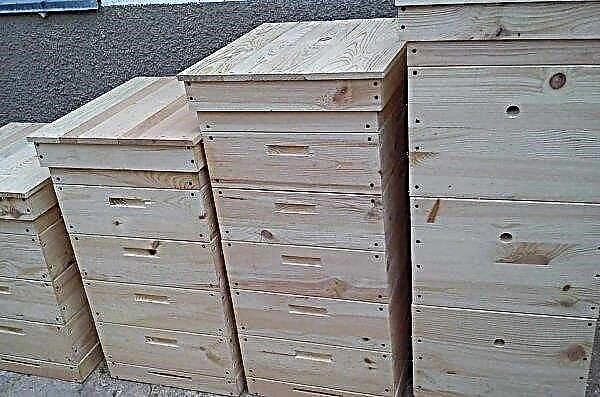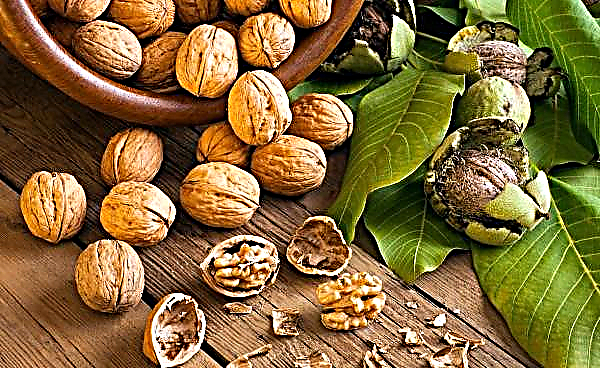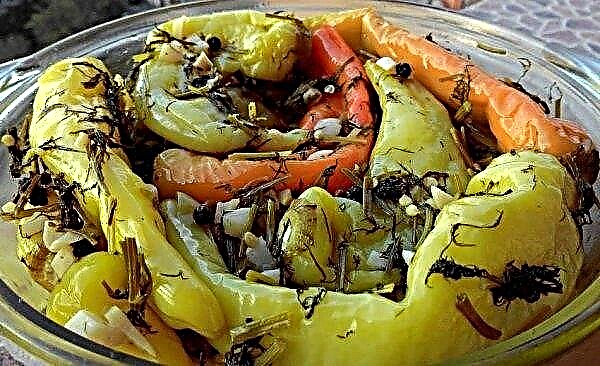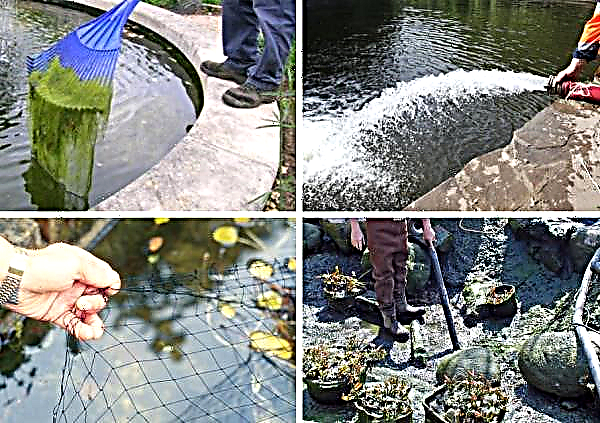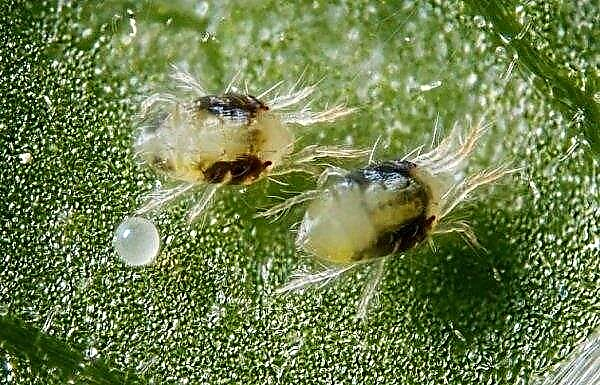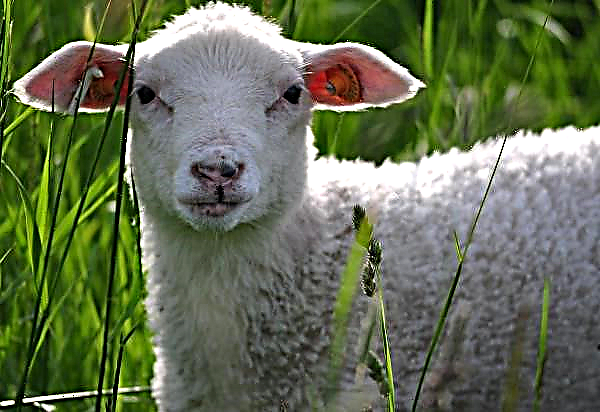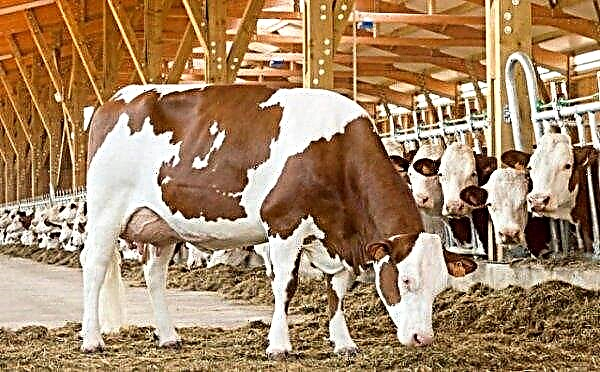The appearance of Alpine forget-me-nots (Myosotis alpestris) in gardens and flowerbeds is a clear sign of the arrival of summer. The plant is an elegant small herbaceous bush, blooming with bright blue, blue or pink flowers. Read more about how forget-me-not is grown and how it is used, read further in the article.
Forget-me-not description
The name of the genus comes from the classical Greek "myos", which means "mouse", and "ous", which means "ear". The last word was applied to plants with short pointed leaves that form this genus. In total, it includes up to 50 species.
But in gardening, only a few of these forget-me-nots are used:
The peculiarity of the species used is that they can be grown on almost any soil and they are great for creating decorative spring flower beds.
Basic characteristics of the plant:
| A type | Herbaceous perennial |
| Family | Boraginaceae |
| Growth | Ubiquitous in Europe, partly in Asia and North America |
| Frost Resistance Zones (USDA) | 3 to 8 |
| Height | 15 to 30 cm |
| Propagation of the plant by shoots on the surface of the soil | At a distance of 15 to 20–25 cm from the center |
| Flowering time | April to May |
| Flower description | Blue with yellow or white eyes |
| Lighting | Bright sun |
| Watering | Moderate |
| Growing conditions | Low |
| Pests and problems | Rabbits, wet soil, mold, rust |
| Invasiveness | In some regions considered an invasive plant |
| Garden application | Rain garden |
Forget-me-not is a low grassy perennial consisting of lodging shoots. In the lower part of the plant is a basal rosette of a dozen lanceolate leaves of gray-green color. By the time of flowering, the plant throws flower stalks with a height of 10 cm.
Did you know? The rain garden is a new kind of landscape design. It is made up of moisture-resistant plants and is equipped in such a way as to collect storm drains from the roofs and ensure their smooth filtration and absorption into the ground.
At the end of each, an inflorescence of small blue flowers develops. Flowers are arranged in pairs. Some of them can reach a diameter of 1 cm. Flowering begins in May and lasts until mid-June. Although among forget-me-nots there are varieties that bloom in late summer.

After the inflorescence fades, a nut appears in place of the flower. It ripens up to 2,000 black shiny seeds. Collected seed boxes can be stored in a paper bag and planted within 2-3 years after collection.
Species and varieties
In the world there are many different forget-me-nots.
Among the most common are the following:
- Forest forget-me-not (Myosotis sylvatica) - pubescent spring-flowering plant with a height of 10 to 30 cm with bright blue, pink or white flowers, similar to stars. It is known for being unpretentious in maintenance and can grow in any conditions. It blooms from mid spring to mid summer and is an excellent honey plant.

- True forget-me-not (Myosotis scorpioides) - is also a perennial that grows along the banks of reservoirs - swamps, lakes, rivers. Grows to 25 cm. Forms inflorescences of blue flowers with a yellow center. Flowering begins in mid-spring.

- Field forget-me-not (Myosotis arvensis) grows throughout Europe and in parts of Asia. Grows in small groups. Forms inflorescences of blue flowers. It blooms from May to late autumn.

- Alpine, or garden forget-me-not (Myosotis alpestris) - grows in meadows and in moist forests. Forms inflorescences of bright blue flowers with a yellow center. It blooms all spring until summer. The plant tolerates drought and frost to -5 ° C. It blooms a lot and quite plentifully. And the large number of seeds that it forms allows you to easily propagate it over a large area.
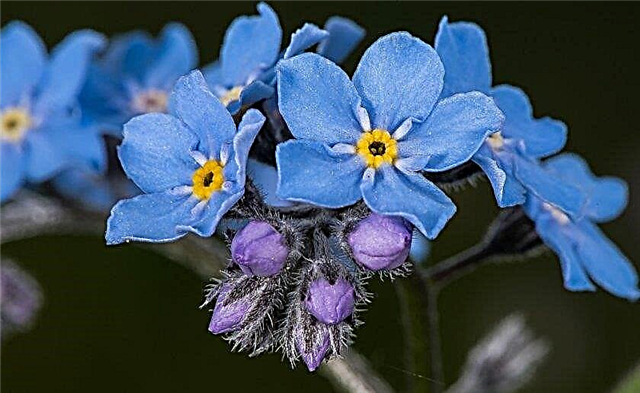
- Lapland, or creeping forget-me-not (Myosotis decumbens) - the same perennial as the rest of the family. But, unlike them, it consists of creeping pubescent shoots with oblong lanceolate leaves, which, spreading over large areas, form almost impassable thickets. It grows on the banks of reservoirs. The flowering period varies from July to August. The shade of inflorescences can be from light blue to dark blue. It grows in the northern regions of Europe.
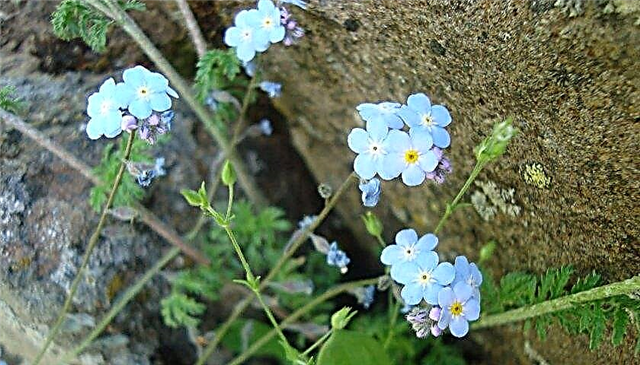
- Forget-me-not latifolia (Myosotis latifolia) - native to West Africa. It has spread around the world relatively recently. It can grow on any type of soil, including moist and stony. It has oval leaves and inflorescences of small pubescent blue or pink flowers. The diameter of the flower is 1 cm.
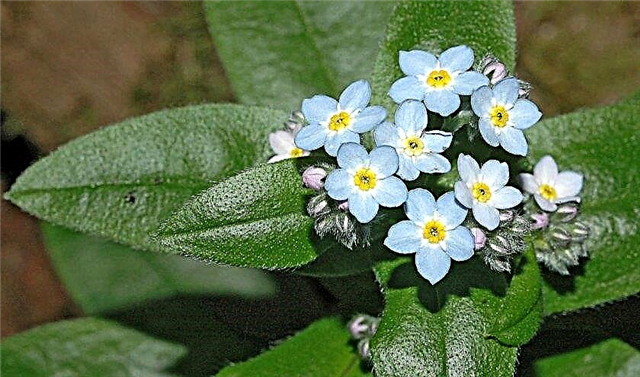
- Forget-me-not rocky (Myosotis rupestris) - grows in the mountains in Altai and in Buryatia. It has numerous stems up to 20 cm high, dull gray linearly oblong leaves and small blue flowers.

Based on several wild species, including Alpine forget-me-nots, a number of hybrid varieties have been bred.
They can be divided into 2 conditional groups:
- Undersized: Compidini, Miro, Blue Ball, Indigo, whose inflorescences do not exceed 15 cm.
- Tall: Victoria, Rosilva, Blauer Korb, Music, Carmen King, with inflorescences reaching a height of 30 cm.
Did you know? Field forget-me-not is one of the most successful plants. Its seeds that have fallen into the soil can germinate within 30 years if optimal conditions for growth are created.
Healing properties
If we talk about medicinal properties, then there is very little confirmed scientific data on this issue.
- But Chinese traditional medicine recommends using forget-me-nots for:
- calming the nervous system;
- relaxing and improving bedtime;
- decrease blood pressure;
- prevent wrinkles and age spots on the face;
- vision improvement;
- liver cleansing;
- normalization of metabolism;
- increase immunity.

For this, forget-me-not petals are prepared and tea is prepared in combination with rose petals and honey. Tea is brewed in the morning and drunk during the day. For cooking 1 tsp. dry raw materials immersed in a glass of boiling water for 5 minutes, and then served to the table, adding honey to taste.
Important! In the UK, syrup is made from petals and given to patients with pulmonary diseases.
Landing and care
Forget-me-not is easy to grow on soils rich in organic compounds. It is advisable to provide her with bright sunlight. But its bushes can grow in partial shade. At the same time, it is taken into account that with a lack of sunlight, flowering time is reduced. If the bush will bloom in the sun for 40-50 days, then in the shade - about 20.
As for the soil, forget-me-nots grow on different soils, often on moist ones. But with a large amount of organics and access to nutrients, the plant gives abundant greens and blooms little, so it is important to maintain a balance.

The soil for planting is thoroughly loosened in early June. The best air temperature for this is +18 ... + 21 ° C. Weeds are removed, large clods of earth are broken. If the soil is poor in organic matter, add compost. Sand and humus are added to clay soil. Seeds are planted in rows in a wet bed.
Before seedlings appear, the soil can be covered with paper to increase the temperature and accelerate germination. After emergence, the root zone is covered with mulch. This will prevent the rapid evaporation of moisture and the growth of weeds. If plants were grown in a greenhouse for planting in a flower garden, then such a planting is carried out in early May. Further care of plants consists in periodic watering.
Important! Gardeners recommend removing faded plants due to their unappealing appearance and leaving only a few plants for seed ripening. Thanks to this, the distribution of the plant in the garden is controlled.
Breeding
Forget-me-nots can be propagated by seeds and division of the bush:
- Before planting seeds, check the soil acidity level. It should be between 5.5 and 7.5 pH.
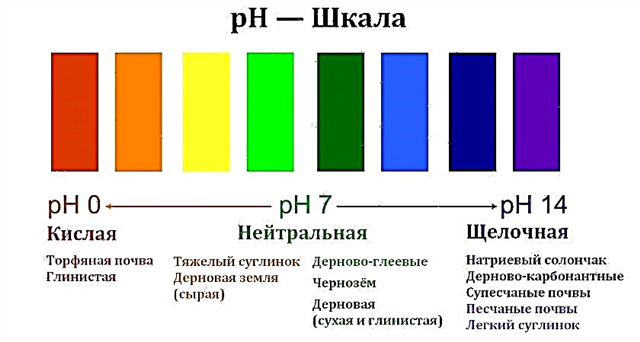
Sow seeds in rows. Sprinkle with sand on top and watered with a watering can. After 2 weeks, seedlings will appear. After another 2 weeks, they can be dived. This should be done so that when transplanting between individual plants there will be about 15 cm of free space. Too high a thickening will contribute to the development of mold, so individual forget-me-nots should be quite far from each other.
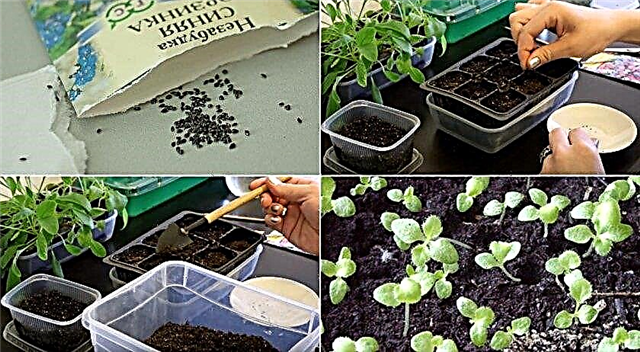
- Division of the bush is carried out in early spring. Since the roots of the culture are fibrous, you just need to separate from the root ball those seedlings that sprouted like self-seeds and formed a dense mass of several plants. Plant them in a sunny area. Add 1 bucket of compost per 1 m² to the soil before planting.
 1 - a bush intended for division is dug up immediately after flowering; 2 - the roots are thoroughly shaken off the ground; 3 - after washing the root system in a bucket of water; 4 - shorten high overhead shoots (to reduce moisture evaporation); 5 - part is broken out from the peripheral area of the bush, having at least one kidney; 6 - can also be divided with a sharp knife.
1 - a bush intended for division is dug up immediately after flowering; 2 - the roots are thoroughly shaken off the ground; 3 - after washing the root system in a bucket of water; 4 - shorten high overhead shoots (to reduce moisture evaporation); 5 - part is broken out from the peripheral area of the bush, having at least one kidney; 6 - can also be divided with a sharp knife.
Diseases and Pests
Despite the fact that forget-me-nots have few problems, the risk of infection with fungal diseases or pests always exists. And it is important for the gardener to fix the problem on time.
The main pests:
- Aphids. These are small insects, up to 2 mm in size, that settle on the leaves of plants and feed on their juice. You can notice them both by the presence of accumulations of these small insects, and by the sticky coating that remains after them. You can destroy them by spraying with soapy water.
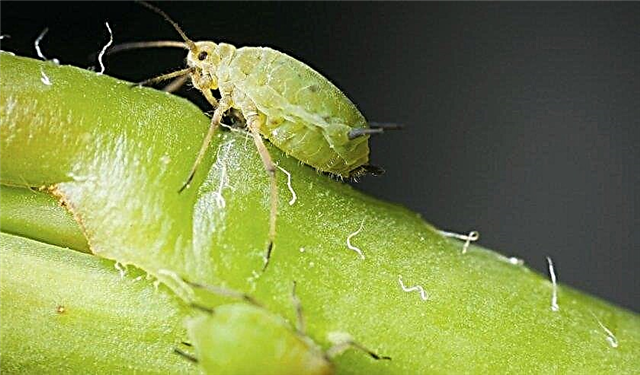
- Watch out for ants. They are carriers of aphids. If there are too many ants in the garden, set up ant traps.
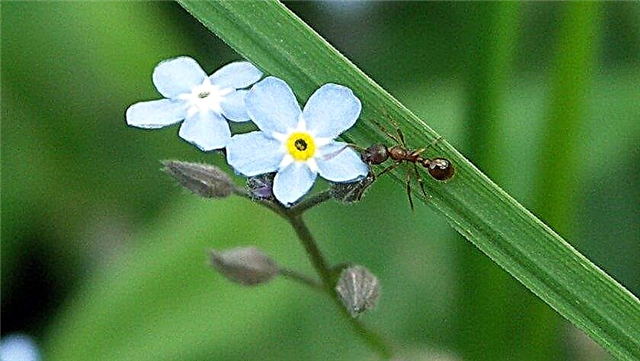
- Potato flea - These are small jumping beetles that feed on leaves. The size of the pest is 2-3 mm. They are not dangerous to forget-me-nots, but their activity deforms the leaves. Microholes appear, corroded sheet plate. Fleas attack only when the soil on the bed is dry, so the main prevention method is to keep the soil moist. Sticks with a sticky surface are also effective against them. They can be greased with resin. After some time, a significant part of the pests will stick to them.

- Slug and snails also dangerous for the plant. To combat them, gardeners sprinkle aisles with crushed shells, which will become an insurmountable barrier. With a large number of pests, row-spacings are treated with Thunderstorm or Sludge in accordance with the instructions on the package.
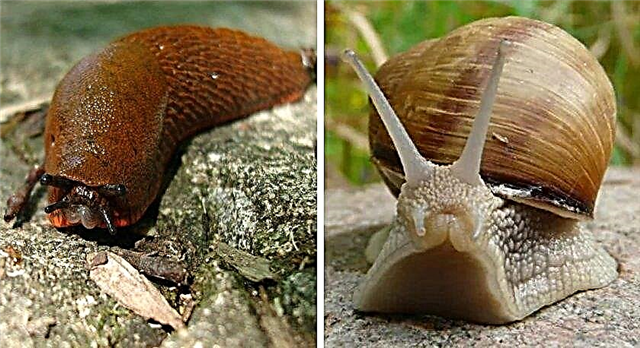
Fungal diseases rarely occur in forget-me-nots. More often than others, they are affected by rust.. It manifests itself in spots of a characteristic color. To combat the fungus, plants are sprayed, and forget-me-nots, including 1% raster Bordeaux fluid.
Did you know? Alpine forget-me-not — Alaska's state flower since 1949.
Planting forget-me-nots will certainly decorate your flower garden. Caring for them is not difficult, since they are undemanding to growth conditions. Having picked up a mixture of several varieties, with different shades of flowers and flowering period, you can create a very beautiful flowerbed or plant them in pots and decorate the arbor.















